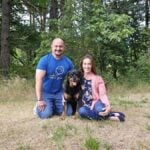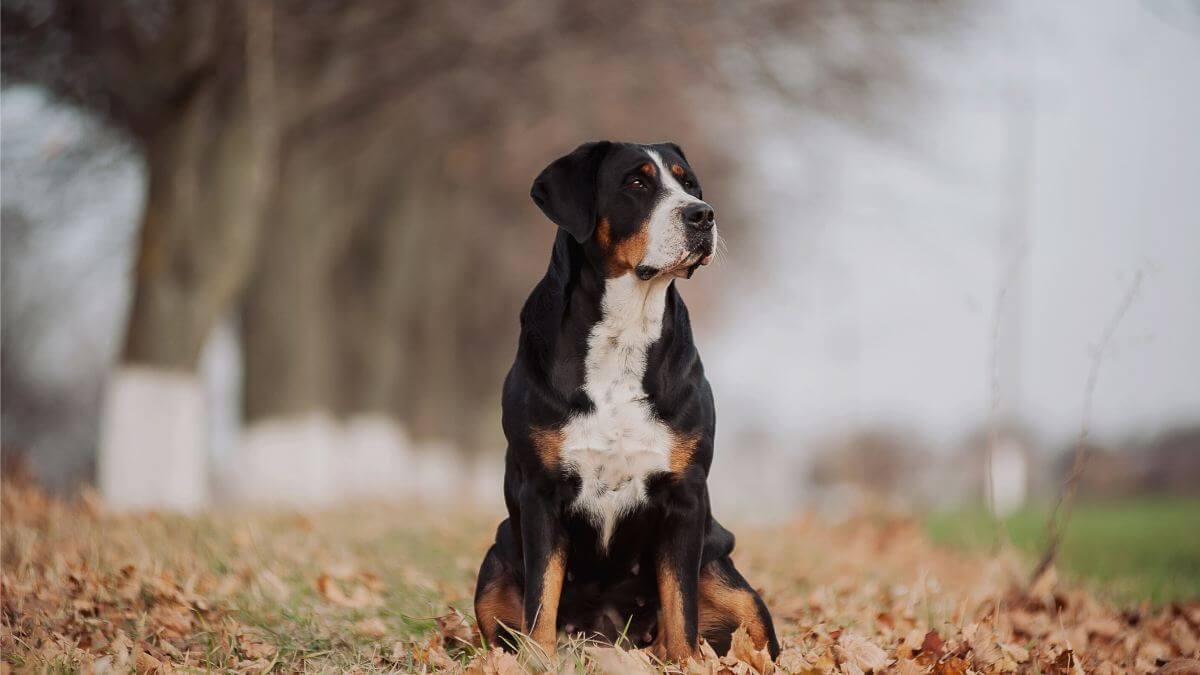


Home » Greater Swiss Mountain Dog

This article was originally published in Showsight Magazine, January 2017 issue.
The Greater Swiss Mountain Dog (GSMD) is the largest, and thought to be the oldest of the four Swiss breeds that are collectively known as Sennenhunds. Besides the GSMD, these breeds include the AKC recognized Bernese Mountain Dog and Entlebucher Mountain Dog, as well as the lesser known Appenzeller Cattle Dog.
Sennenhund translates to mean “dog of the senne,” where the Swiss senne is an alpine herdsman or shepherd. In Switzerland, the breed is known as the Grosser Schweizer Sennenhund, meaning “big dog of the alpine herdsman.” The other three Sennenhunds were named according to the canton or region in Switzerland where they originated.
The Sennenhunds are all characterized by their striking tricolor coat of black with white and rich rust markings. The GSMD and BMD were both historically used as draft and drover breeds. They assisted with farm chores and then pulled the milk and other farm produce to market in their carts. This earned them the nickname of “the poor man’s horse.” Their ancestors belong to a group of dogs known as Metzgerhund or butcher dogs.
The Entlebucher and Appenzeller were both used as true cattle herding dogs, working with the senne to move the cattle from the valleys where they wintered to the alpine pastures during the summer months.
Quoting the AKC standard: “The Greater Swiss Mountain Dog is a draft and drover breed and should structurally appear as such. It is a striking, tri-colored, large, powerful, confident dog of sturdy appearance. It is a heavy-boned and well-muscled dog which, in spite of its size and weight, is agile enough to perform the all-purpose farm duties of the mountainous regions of its origin.” This general description gives an overall impression of the dog.
As described above, Greater Swiss Mountain Dogs originated as working farm dogs. You will quickly realize that there are a wide range of looks or styles that adequately fit that description.
When judging the GSMD, judges are asked to look for the large, powerful, confident dog most suited to its draft and drover duties. Size alone is not an attribute. Proper evaluation of the GSMD will place great emphasis on the well-conditioned athlete and penalize the overweight or out-of-shape dog. A fat dog could never perform its historic task as an all-purpose farm dog, and such a dog is not a good specimen of the breed. Markings are of lesser importance and should be used as a tie-breaker.
This is not a “head” breed, although, like all breeds, correct head type and expression are an important part of breed type. There is great variation in head type. The ideal GSMD head is a comparatively long head with a flat back skull and slight stop. From the beginning, a dog was wanted with a “cow-dog” type of skull, with a flat forehead, in distinct contrast to the St. Bernard. The muzzle should be of approximately equal length to the back skull, but should be blunt and not pointed.
Unfortunately, most muzzles that approach the correct length tend to be pointed or snipey. Retaining proper length and width of the muzzle seems to be challenging. The lips and flews should be tight. Most dogs with correct width and depth of muzzle tend to be a little lippy, but a Great Dane look is not desirable. The expression should be animated and gentle with dark brown, almond-shaped eyes preferred. Incorrect eyes are very distracting from the correct headpiece. Blue eyes are a DQ.
In adult dogs, the nose leather should be black. All GSMD puppies are born with pink noses, and the pigment fills in as they age. It is not unusual to see puppies with pink spots on their noses, which should not be faulted. A good GSMD head should flow together, with no sharp angles, such as prominent brows, and no domey skulls. The head should never appear too big or too little for the body. A common mistake when judging the breed is to award a “big head” without considering whether it fits the standard. The standard calls for a scissors bite, but with no mouth DQs.
The GSMD is a slightly longer-than-tall breed. Length of leg equals depth of body. They move with a level topline, and the tail should not tilt or curl over the back. The ideal markings of black with a white blaze, chest, feet, and tail tip offset by the rich rust are described in the standard, but are of lesser importance than structure and temperament, which directly affect the working ability of the breed. The only trait to be severely penalized is shyness or aggressiveness. Lack of undercoat is to be penalized, and all other faults should be penalized to the extent of the deviation from the ideal described in the AKC Standard.
GSMD breeders and owners are very active in preserving the working heritage of the breed. GSMDs compete in draft trials, herding tests, weight pulls, pack dog hikes, as well as in rally, obedience, agility, and tracking trials. They have also been used as search and rescue dogs and as therapy dogs. As you can see, this is a breed of many talents.